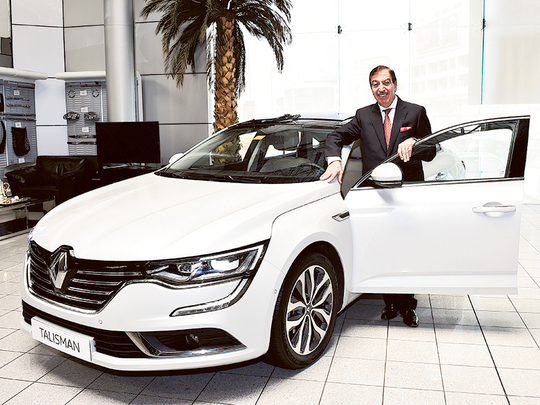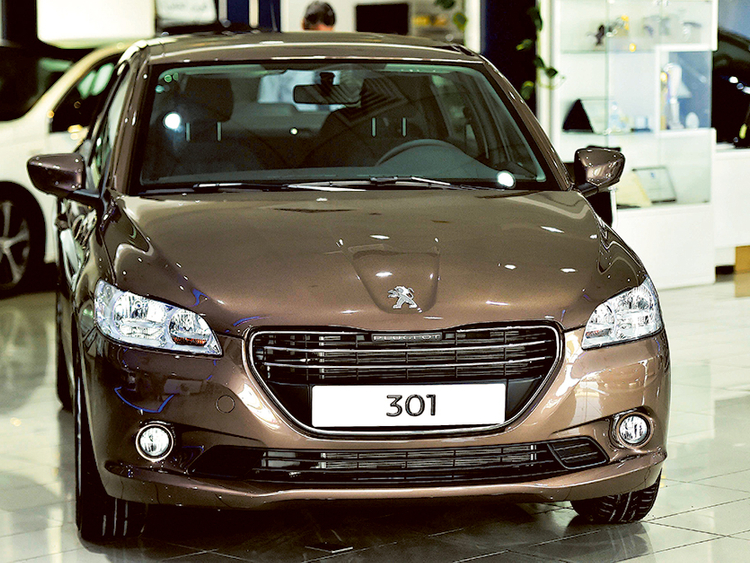
Dubai
UAE’s automotive dealerships are not letting a 15 per cent drop in volumes this year to hit the brakes. In fact, with a mix of aggressive promotions and hands-on management of stocks, they are far better positioned to see off the downturn in the retail sector than many of the other categories, where sales have plummeted by as much as 40 per cent.
Also, during the crucial fourth quarter, some of the dealerships believe they will start seeing the placement of major orders by fleet operators and car-hire companies, and thus ensure they close the year out on a relatively solid footing. “As against the 419,000 units last year, UAE dealerships should end this year moving 360,000 units, which is what the sector saw in 2013,” said Michel Ayat, CEO of Arabian Automobiles Co., which represents Nissan, Infiniti and Renault. “Sure, there’s a drop but that has come principally from local car dealers not being able to get enough re-export orders because of the regional crisis.
“A 15 per cent drop in overall sales under the current market circumstances is nothing in my opinion. We had a bottoming out in Q2- and Q3-16, but Q1-16 was good and the industry can reasonably hope for a better than average Q4-16.”
Interestingly enough, the premium end of the automotive market did not experience as steep a drop as the wider market. In the first seven months, the decline was estimated at around 9-9.3 per cent compared with 2015, based on industry estimates. For the full year, the premium brands should be looking at around 55,000 units in this market. (This is in contrast to the performance the luxury category has had in other retail verticals such as fashion and accessories, where the decline is projected at 40-50 per cent from 2015.)
“There’s a reason why the auto sector remains fairly bullish — in 2009, the market was wiped out to the tune of 40 per cent and the problem started from Day 1 of the year,” said Ayat. “It was not an easy year, to say it mildly. But between 2010-15, car sales doubled and everyone enjoyed the benefits. The current rate of decline has also been more gradual.”
According to market sources, it will take some more time for retail buyers to get back into buying a new car. “The worries over the economy has kept many individual buyers on the sidelines,” said Ajith Kumar, CEO of Swaidan Trading and the dealer for Peugeot. “Which is why the market needs to see fleet buyers get active during the fourth quarter. The expectations are that they will.
“But there are still positives in the year to date — dealerships, by and large, have not been saddled with unsold stocks and forced to sell them at heavy discounts. There are the aggressive promotions, but nowhere do you see prices being cut drastically.”
Thankfully, for car dealers and buyers, the financing rate on new purchases has been in check for a while now. Lenders have also been supportive with deferred payment schemes, whereby the buyer need pay the first installment only after 180 days or so as opposed to the standard 30 days. The interest for this extended non-payment duration is mostly borne by the dealer. “Effectively, this means in a buyers’ market the customer gets the best of everything — the best deal on purchase, best deal on warranty and maintenance, freebies like free registration and insurance,” said a market source. “And to top it, they also get the delayed start to paying the first instalment. All these count for a lot given the depressed consumer sentiment.”
But not all local dealers have been able to “manage” the market situation equally. Industry sources say that 70 per cent of dealerships could have seen a steeper decline than the market average in their year-to-date volumes.
In such a situation, some dealers see a situation where they can try and win over a higher share at the expense of the struggling ones. “Even bad years can have their uses,” said Ayat.
Profit margins have taken a hit, but “still profitable”. “Margins are always a combination of pricing and dealer incentives,” Ayat added. “These days, customers are not taking the burden of the price. That can only mean manufacturers and dealerships have to do so.”













